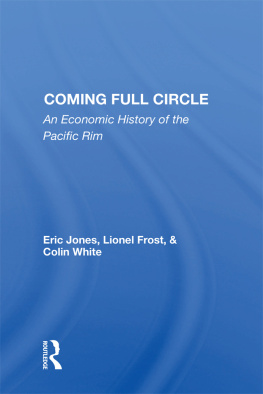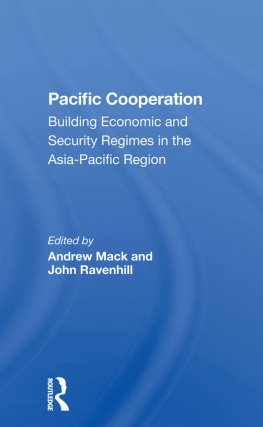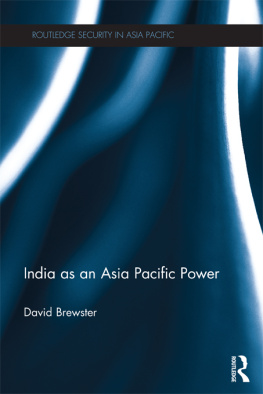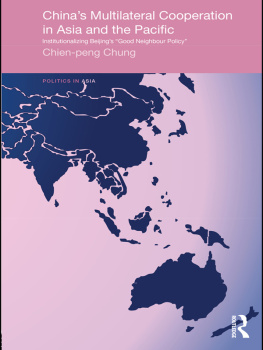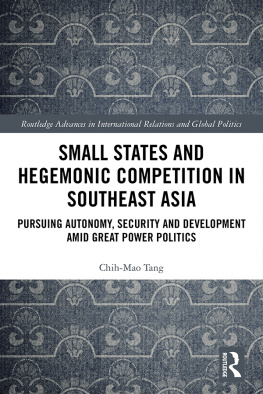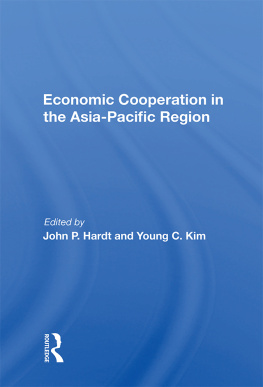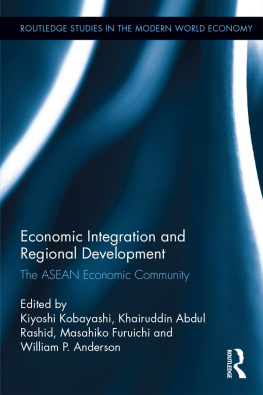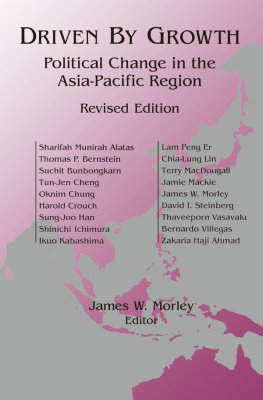Coming Full Circle
Essays in World History
William H. McNeill and Ross Dunn, Series Editors
Coming Full Circle: An Economic History of the Pacific Rim
Eric Jones, Lionel Frost, and Colin White
The Industrial Revolution in World History
Peter N. Stearns
FORTHCOMING
The Horizons of Hellas
Charles D. Hamilton
Christian Missionaries and European Expansion: 1450 to the Present
Roger B. Beck
The New World Civilizations
Richard E.W. Adams
Food, Weather, and History
Mary K. Matossian
Sailors, Ships, and the Sea: Seafaring Technology in World History
John F. Guilmartin, Jr.
The Islamic Gunpowder Empires in World History
Douglas E. Streusand
The Rise of Europe in the Middle Ages
William D. Phillips, Jr.
The Indian Ocean: A History of People and the Sea
Kenneth McPherson
Coming Full Circle
An Economic History of the Pacific Rim
Eric Jones ,
Lionel Frost ,
& Colin White
La Trobe University
First published 1993 by Westview Press, Inc.
Published 2018 by Routledge
52 Vanderbilt Avenue, New York, NY 10017
2 Park Square, Milton Park, Abingdon, Oxon OX14 4RN
Routledge is an imprint of the Taylor & Francis Group, an informa business
Copyright 1993 Taylor & Francis
All rights reserved. No part of this book may be reprinted or reproduced or utilised in any form or by any electronic, mechanical, or other means, now known or hereafter invented, including photocopying and recording, or in any information storage or retrieval system, without permission in writing from the publishers.
Notice:
Product or corporate names may be trademarks or registered trademarks, and are used only for identification and explanation without intent to infringe.
Library of Congress Cataloging-in-Publication Data
Jones, Eric L. (Eric Lionel)
Coming full circle: an economic history of the Pacific Rim / Eric
Jones, Lionel Frost & Colin White.
p. cm. (Essays in world history)
Includes bibliographical references and index.
ISBN 0-8133-1240X. ISBN 0-8133-1241-8 (pbk.)
1. Pacific AreaEconomic conditions. 2. East AsiaEconomic
conditions. I. Frost, Lionel. II. White, Colin, 1943
III. Title. IV. Series.
HC681.J66 1993
330.91823dc20 93-4130
CIP
ISBN 13: 978-0-367-00418-7 (hbk)
To Our Children
The "Coming Full Circle" of the title of this book refers to the fact that the center of gravity of world economic life was once on the edge of the Pacific, shifted away as Europe and the Atlantic economy rose, and is now returning in force. One thousand years ago the center was the China of the Song (or Sung) dynasty. This civilization, which lasted from the tenth through the thirteenth centuries A.D., had inherited a range of remarkable technologies from even earlier periods of Chinese history. The tool kit of Song China anticipatedon a large scalemuch of what was to appear in the Europe of the Middle Ages. It has even been suggested that much of the commercialization that took place elsewhere in Asia and as far away as Europe resulted from the westward spread of Song Chinese ideas. The diffusion continued after the dynasty had fallen to invaders from the steppes. Chinese notions went on spreading, like light reaching earth from a dead star.
Today the largest group of fast-growing economies in the world is once again on the Pacific Rim. It is composed of the East Asian countriesJapan, South Korea, Taiwan, Hong Kongand the coastal provinces of China (some of which have larger populations than France or Germany). Stretch a geographical point and the more successful of the Southeast Asian economiesSingapore, Thailand, and Malaysiamight be included.
The rise of the Asia Pacific economy is the dominating fact of modern economic geography, the most striking event in the economic history of the late twentieth century. On the face of things, this is a virtual break in the trends of historythe first achievement of sustained growth by a major cultural area outside Europe or regions of European settlement.
What explains this massive shift, and where is it taking us? Despite its recency and unprecedented scale, the change was not totally divorced from the historical past. Certainly it cannot be understood without a look at its historical setting, just as the process of growth cannot be fully grasped without consideration of long stretches of past experience. Economic history offers the best hope of understanding the recurrent range of possibilities and removing the "noise" of short-term trends and fluctuations so we can glimpse the likely tendencies of the future.
Where the shift is as marked as it has been with the new importance of the Pacific, its origins and the problems it provokes become matters of everyday concern for thinking people. The centerpiece of the change was the unexpected postwar recovery and continued outstanding performance of Japan, marked above all by the astounding increase in U.S.- Japanese trade. Other parts of East Asia shared in this growth.
Westerners had not expected the phenomenon of East Asian growth. They were agreeably surprised by the recovery of Europe after the Second World War, but few of them thought (or knew enough Japanese history to understand) that Western achievements could be matched by Asians. "The Jap has no business savvy," Rudyard Kipling observedor thought he observed. As late as the 1960s some writers were still pooh-poohing any suggestion that the initial recovery of Japan would continue into faster and faster industrial growth. But it did continue. The process spread out to embroil and transform more and more of the East Asian region, including, astonishingly, the southern part of Communist China, which at the moment has the highest growth rates of all.
Many people in the United States and Europe find this novelty frightening. The high-quality manufactured exports from East Asia, especially Japan, represent severe competition. The alarm is greatest in the United States, where disquiet often takes the form of "Japan bashing." The alarm is stronger because Japan has not only built up a big trade balance in its own favor but has also invested heavily in the United States and elsewhere, as if it were taking over by purchase what it had failed to capture militarily during the Second World War.
During the long cold war between the West and the USSR, the United States deemed it wise to keep Japan in the anticommunist camp by helping to build up the Japanese economy. The United States transferred advanced industrial methods to Japan and paid much of the cost of defending parts of East Asia and the Pacific against communism. Hence many U.S. commentators now look on a prosperous, competitive Japan as a "cuckoo in the nest" that once looked like any other little nestling but is now a hulking brute, threatening to tip U.S. industries over the side. Why U.S. (and other Western) responses have been so angry and not produced a more vigorous adjustment to meet the competition is an interesting puzzle.
The English-speaking countries of the Pacific Rim as a whole have done nothing so well as East Asia. Elsewhere around the Rimfor instance, down the west coast of Latin America, in the Philippines, or in Papua New Guineaeconomic performance has continued to be very weak. Nevertheless, the success of just the East Asian part of the Rim and its "frontier" of high-performance economies in Southeast Asia has been sufficient to reshape the economic geography not only of the Pacific but of the world. A third great zone has come into being alongside the older developed areas of Western Europe and North America.

